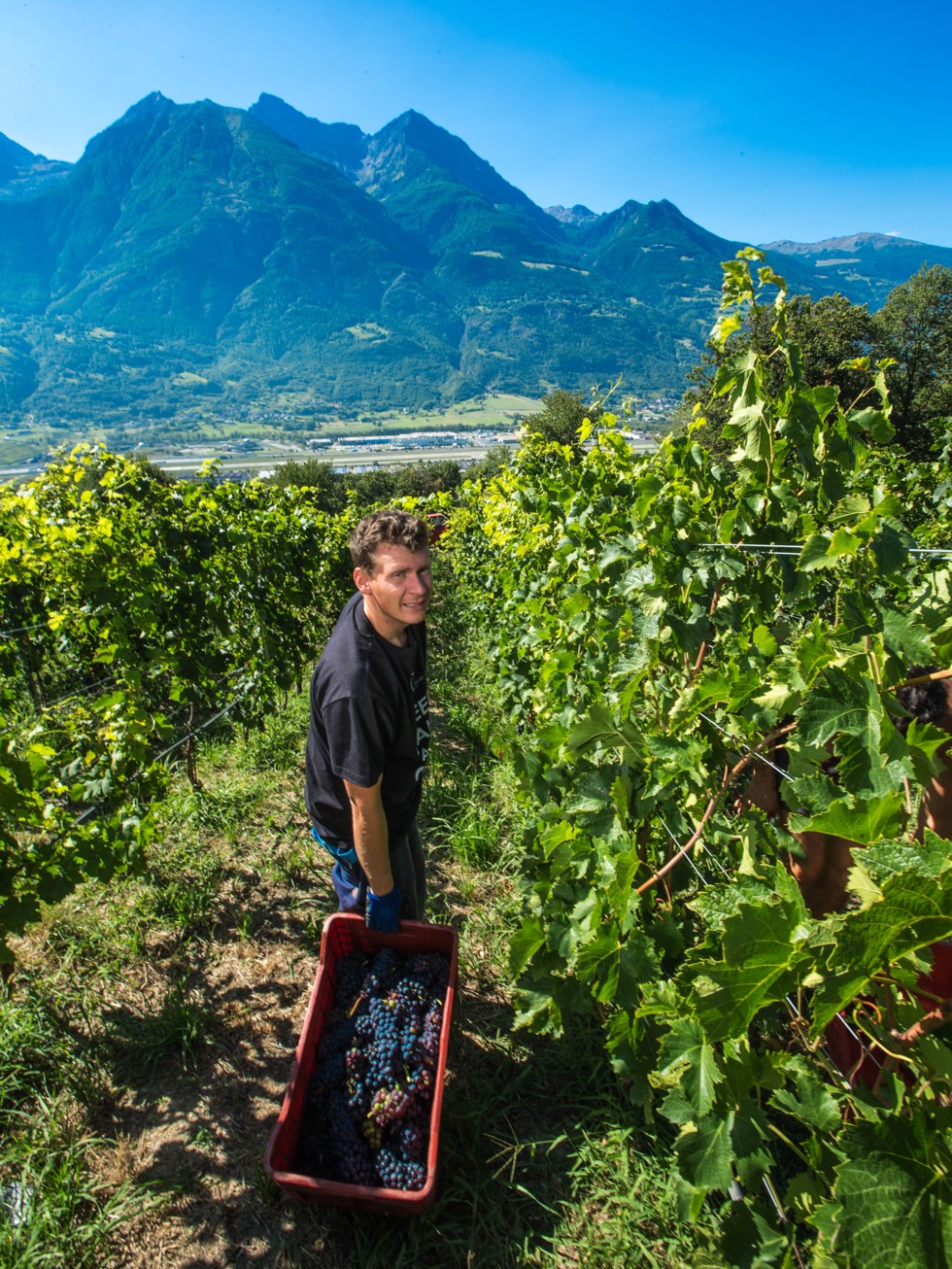The Grosjean family traces its roots back to the village of Fornet in the high mountain passes of the Valle d’Aosta known as Valgrisenche where they raised cattle. During the summer months, the family cultivated grapes and chestnuts on the slopes at lower altitude, stocking up on wine to supply themselves over the long winters. In 1969, Dauphin Grosjean, the father of the five sons that now collaborate to produce the wines of this estate, was encouraged to present his wine at the local “wine expo”. The exceptional quality of his work was recognized and the entire family became engaged in the expansion of the vineyards and in the production of wine.



The estate has now grown to encompass seven hectares of vineyards. The domaine is located in the hamlet of Ollignan on the border of the towns of Quart and Saint Christophe and includes “cru” vineyard sites such as Tzeriat, Rovettaz, Creton and Touren in Quart, plus Tzantè de Bagnere, Merletta and Castello di Pleod in Saint Christophe. After starting out with the traditional Petit Rouge along with some Gamay, Pinot Noir and Petite Arvine, the Grosjeans have planted other local varietals such as Fumin, Cornalin, Premetta and Vuillermin. Sustainable farming techniques have been in place since 1975: only organic fertilizers are applied and no pesticides or herbicides are used. Natural yeasts are utilized for fermentation.
Farming
Certified organic by Ecocert since 2011 (first certified estate in the Val d’Aoste), practicing organic since 1975
Treatments
Copper sulfate only when necessary
Ploughing
Annual ploughing to maintain vineyard health
Soils
Sandy glacial moraines
Vines
Trained in Guyot and planted at 6,000-8,000 vines/ha, vines average 30 years old
Yields
Controlled through severe winter pruning, debudding, and an occasional green harvest
Harvest
Entirely manual, usually in early October
purchasing
Mostly estate fruit, with 30% of output purchased from other family members and neighbors in Quart
whose farming is overseen by the Grosjeans
Fermentation
After total destemming and a 1-2 day cold soak, wnes ferment with indigenous yeasts in stainless-steel tanks or tronconic wood foudres/tini. Petite Arvine is partially (30%) racked into barriques after wine reaches 2% alcohol
Extraction
Red wines see pumpovers during cuvaison. White wines see bâtonnage during élevage
Chaptalization
None
Pressing
Pneumatic pressing
Malolactic Fermentation
Spontaneous, in stainless-steel tanks following alcoholic fermentation
Élevage
Wines age in stainless-steel tanks, barriques, or foudres/botti for 6-18 months
lees
Wines remain on their fine lees until assemblage prior to bottling.
Fining and Filtration
Wines are unfined and are cross or cartridge filtered
sulfur
Applied during vinification, after malolactic, and at bottling, with 60-80 mg/l total sulfur.




